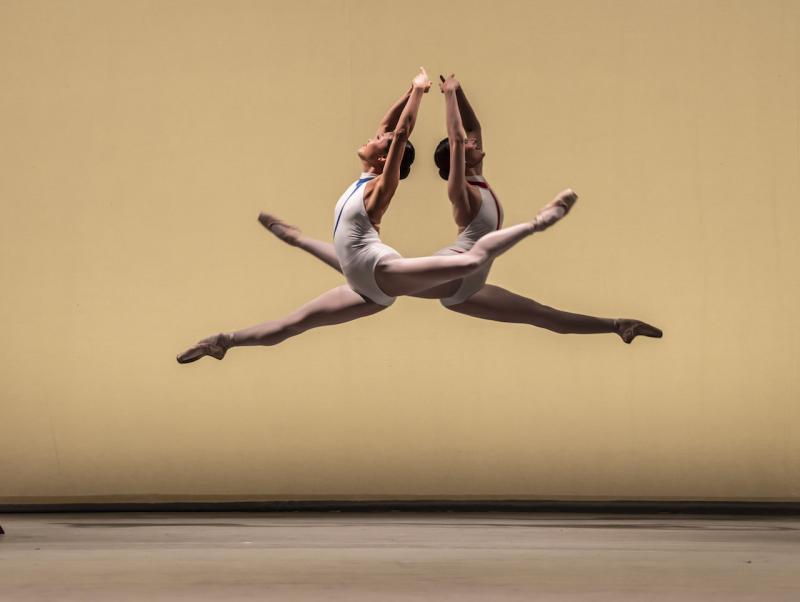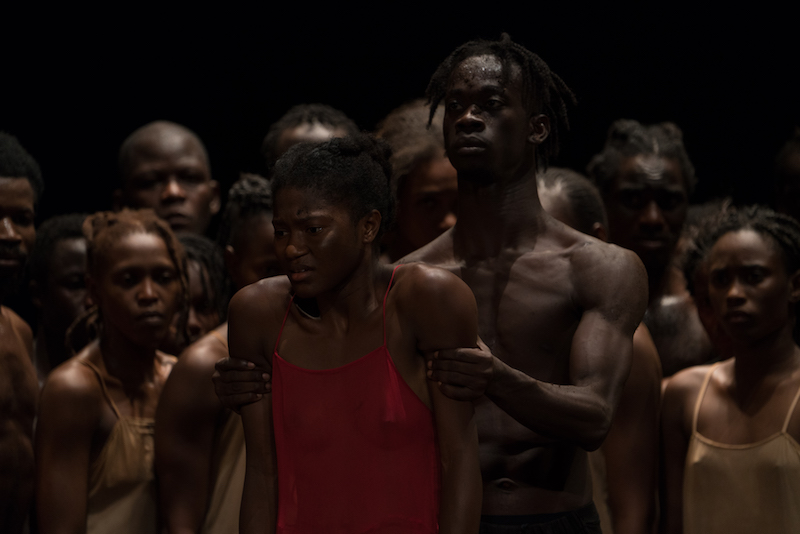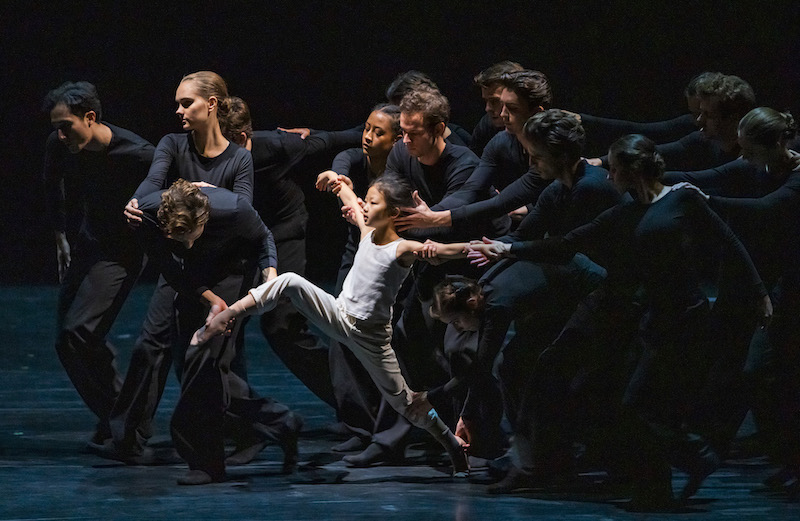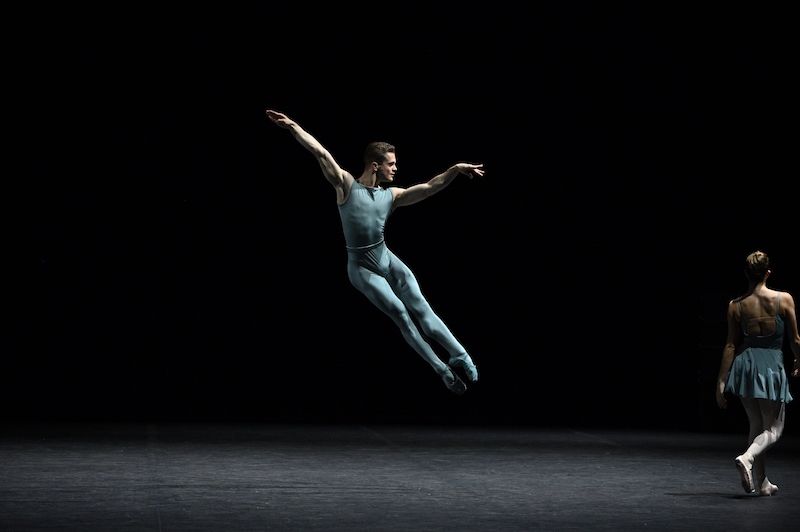Best of 2022: Dance | reviews, news & interviews
Best of 2022: Dance
Best of 2022: Dance
It might not be business as usual, but memorable work has come through

Come the end of the year, the ritual glance over the shoulder, what we crave is celebration – this year of all years. "Look, we have come through!" is what we all want to hear from arts practitioners who took such a battering in the previous one.
And it would be possible, just about, for this article to take that tone. The big ballet companies – paddling furiously beneath the surface – have for the most part kept up an impression of business as usual. There was ambition, if not wholesale success, in two big three-act creations in the first half of the year: Tamara Rojo’s Florence Nightingale-inspired version of Raymonda, for ENB, and Christopher Wheeldon’s unwieldy adaptation of the Mexican hit novel Like Water For Chocolate for the Royal. On more solid ground, the Royal Ballet staged a magnificent first revival of its refurbished Swan Lake, and later a wondrously detailed Mayerling, equally grand in scale. On both latter occasions, the fine playing of the House orchestra was key, despite drastic changes in the employment security of many of its musicians. Why is this relevant? Because even a back-desk violinist is part of the wider ecology of dance, and that eco-system remains imperilled at every level. Don’t even ask about the small-scale companies that have simply disappeared.
Post-lockdown recovery is only part of the story. The UK dance landscape is still coming to terms with Brexit. As a receiving house, Sadler’s Wells is no longer an inevitable port of call for every major contemporary-dance company in Europe. It's the long-established names that make it through: our critic David Nice was pleasurably baffled by Teresa de Keersmaeker’s Bach-in-the-dark Goldberg Variations in the summer, and earlier the Pina Bausch company brought us Kontakthof, a work from the late Seventies whose revival was almost certainly prompted by a curiosity to see what new resonances it might have acquired after two pandemic years of no kontakt. Sadler’s most memorable offer from overseas was also from the Pina Bausch back-catalogue. This was her landmark Rite of Spring, unusually performed by 36 dancers (pictured above) assembled from 14 African countries. “How would you dance if you knew you were about to die?” was the question the choreographer had posed to her own dancers back in 1975. And that visceral immediacy came through vividly in this world-touring show staged by École des Sables, based in Senegal.
Sadler’s most memorable offer from overseas was also from the Pina Bausch back-catalogue. This was her landmark Rite of Spring, unusually performed by 36 dancers (pictured above) assembled from 14 African countries. “How would you dance if you knew you were about to die?” was the question the choreographer had posed to her own dancers back in 1975. And that visceral immediacy came through vividly in this world-touring show staged by École des Sables, based in Senegal.
Exactly what special quality the pan-African dancers brought to the piece was hard to pinpoint. It wasn’t only the ferocity of execution or their physical magnificence. What made them revelatory was the hot-blooded throb of the drama they enacted, releasing Rite from the frozen north of its Russian origins to render it universal. What’s more, for a predominantly white audience, there was an unmistakable low hum of post-colonial guilt as the scenario unfolded. What was once a distant, archaic fable came sharply into focus: the bullied and the bullies, the victim and the mob. More evidence of the ability of dance to tackle meaty topics came from the Canadian choreographer Crystal Pite. Five years ago her 25-minute piece Flight Pattern – a comment on the global refugee crisis – was a left-field box-office hit for the Royal Ballet, and this year she expanded it to make a full evening work, Light of Passage, using all three movements of Henryk Gorecki’s Symphony of Sorrowful Songs. Any fear of a full evening’s gloom and doom was swiftly blown away by a luminous new section (pictured above) addressing the UN Convention on the Rights of the Child. This featured six very young children, angelic in white, who were guided, supported and generally dance-enabled by black-clad members of the Royal Ballet. Along with a final section dealing with what Pite called “the ultimate border crossing”, featuring two silver-haired elders, it made sense of the work’s over-arching title. This was serious, thought-provoking work that dared you to suppose that ballet could ever be anything less than serious. At the same time it delivered eyefuls of glorious synchronised movement that left you both wrung out and uplifted.
More evidence of the ability of dance to tackle meaty topics came from the Canadian choreographer Crystal Pite. Five years ago her 25-minute piece Flight Pattern – a comment on the global refugee crisis – was a left-field box-office hit for the Royal Ballet, and this year she expanded it to make a full evening work, Light of Passage, using all three movements of Henryk Gorecki’s Symphony of Sorrowful Songs. Any fear of a full evening’s gloom and doom was swiftly blown away by a luminous new section (pictured above) addressing the UN Convention on the Rights of the Child. This featured six very young children, angelic in white, who were guided, supported and generally dance-enabled by black-clad members of the Royal Ballet. Along with a final section dealing with what Pite called “the ultimate border crossing”, featuring two silver-haired elders, it made sense of the work’s over-arching title. This was serious, thought-provoking work that dared you to suppose that ballet could ever be anything less than serious. At the same time it delivered eyefuls of glorious synchronised movement that left you both wrung out and uplifted. Elsewhere, triple and mixed bills supplied nuggets of brilliance. English National Ballet struck gold with William Forsythe’s Blake Works I (pictured above), a confection of pure fun and fizz which set ultra-formal ballet steps to the disco ballads of James Blake. Birmingham Royal Ballet made an important discovery in the work of the late and prolific Uwe Scholz, whose Seventh Symphony (Beethoven’s of course, main picture) provided a stunning showcase for the Brum company’s talent in depth and breadth. Astonishingly, BRB’s artistic director, Carlos Acosta, still finds time to head up his own-brand company, Acosta Danza, which recently upped sticks from its sunny base in Havana, Cuba and relocated to unsunny east London. On the strength of 100% Cuban, the mixed bill it showed at Sadler’s Wells in early 2022, and the new short commute, I trust it won't be too long before we’re once more invited to bask in its 100% positivity. We'll surely need it.
Elsewhere, triple and mixed bills supplied nuggets of brilliance. English National Ballet struck gold with William Forsythe’s Blake Works I (pictured above), a confection of pure fun and fizz which set ultra-formal ballet steps to the disco ballads of James Blake. Birmingham Royal Ballet made an important discovery in the work of the late and prolific Uwe Scholz, whose Seventh Symphony (Beethoven’s of course, main picture) provided a stunning showcase for the Brum company’s talent in depth and breadth. Astonishingly, BRB’s artistic director, Carlos Acosta, still finds time to head up his own-brand company, Acosta Danza, which recently upped sticks from its sunny base in Havana, Cuba and relocated to unsunny east London. On the strength of 100% Cuban, the mixed bill it showed at Sadler’s Wells in early 2022, and the new short commute, I trust it won't be too long before we’re once more invited to bask in its 100% positivity. We'll surely need it.
The future of Arts Journalism
You can stop theartsdesk.com closing!
We urgently need financing to survive. Our fundraising drive has thus far raised £49,000 but we need to reach £100,000 or we will be forced to close. Please contribute here: https://gofund.me/c3f6033d
And if you can forward this information to anyone who might assist, we’d be grateful.

Subscribe to theartsdesk.com
Thank you for continuing to read our work on theartsdesk.com. For unlimited access to every article in its entirety, including our archive of more than 15,000 pieces, we're asking for £5 per month or £40 per year. We feel it's a very good deal, and hope you do too.
To take a subscription now simply click here.
And if you're looking for that extra gift for a friend or family member, why not treat them to a theartsdesk.com gift subscription?
more Dance
 'We are bowled over!' Thank you for your messages of love and support
Much-appreciated words of commendation from readers and the cultural community
'We are bowled over!' Thank you for your messages of love and support
Much-appreciated words of commendation from readers and the cultural community
 A Single Man, Linbury Theatre review - an anatomy of melancholy, with breaks in the clouds
Ed Watson and Jonathan Goddard are extraordinary in Jonathan Watkins' dance theatre adaptation of Isherwood's novel
A Single Man, Linbury Theatre review - an anatomy of melancholy, with breaks in the clouds
Ed Watson and Jonathan Goddard are extraordinary in Jonathan Watkins' dance theatre adaptation of Isherwood's novel
 Peaky Blinders: The Redemption of Thomas Shelby, Rambert, Sadler's Wells review - exciting dancing, if you can see it
Six TV series reduced to 100 minutes' dance time doesn't quite compute
Peaky Blinders: The Redemption of Thomas Shelby, Rambert, Sadler's Wells review - exciting dancing, if you can see it
Six TV series reduced to 100 minutes' dance time doesn't quite compute
 Giselle, National Ballet of Japan review - return of a classic, refreshed and impeccably danced
First visit by Miyako Yoshida's company leaves you wanting more
Giselle, National Ballet of Japan review - return of a classic, refreshed and impeccably danced
First visit by Miyako Yoshida's company leaves you wanting more
 Quadrophenia, Sadler's Wells review - missed opportunity to give new stage life to a Who classic
The brilliant cast need a tighter score and a stronger narrative
Quadrophenia, Sadler's Wells review - missed opportunity to give new stage life to a Who classic
The brilliant cast need a tighter score and a stronger narrative
 The Midnight Bell, Sadler's Wells review - a first reprise for one of Matthew Bourne's most compelling shows to date
The after-hours lives of the sad and lonely are drawn with compassion, originality and skill
The Midnight Bell, Sadler's Wells review - a first reprise for one of Matthew Bourne's most compelling shows to date
The after-hours lives of the sad and lonely are drawn with compassion, originality and skill
 Ballet to Broadway: Wheeldon Works, Royal Ballet review - the impressive range and reach of Christopher Wheeldon's craft
The title says it: as dancemaker, as creative magnet, the man clearly works his socks off
Ballet to Broadway: Wheeldon Works, Royal Ballet review - the impressive range and reach of Christopher Wheeldon's craft
The title says it: as dancemaker, as creative magnet, the man clearly works his socks off
 The Forsythe Programme, English National Ballet review - brains, beauty and bravura
Once again the veteran choreographer and maverick William Forsythe raises ENB's game
The Forsythe Programme, English National Ballet review - brains, beauty and bravura
Once again the veteran choreographer and maverick William Forsythe raises ENB's game
 Sad Book, Hackney Empire review - What we feel, what we show, and the many ways we deal with sadness
A book about navigating grief feeds into unusual and compelling dance theatre
Sad Book, Hackney Empire review - What we feel, what we show, and the many ways we deal with sadness
A book about navigating grief feeds into unusual and compelling dance theatre
 Balanchine: Three Signature Works, Royal Ballet review - exuberant, joyful, exhilarating
A triumphant triple bill
Balanchine: Three Signature Works, Royal Ballet review - exuberant, joyful, exhilarating
A triumphant triple bill
 Romeo and Juliet, Royal Ballet review - Shakespeare without the words, with music to die for
Kenneth MacMillan's first and best-loved masterpiece turns 60
Romeo and Juliet, Royal Ballet review - Shakespeare without the words, with music to die for
Kenneth MacMillan's first and best-loved masterpiece turns 60
 Help to give theartsdesk a future!
Support our GoFundMe appeal
Help to give theartsdesk a future!
Support our GoFundMe appeal

Add comment